



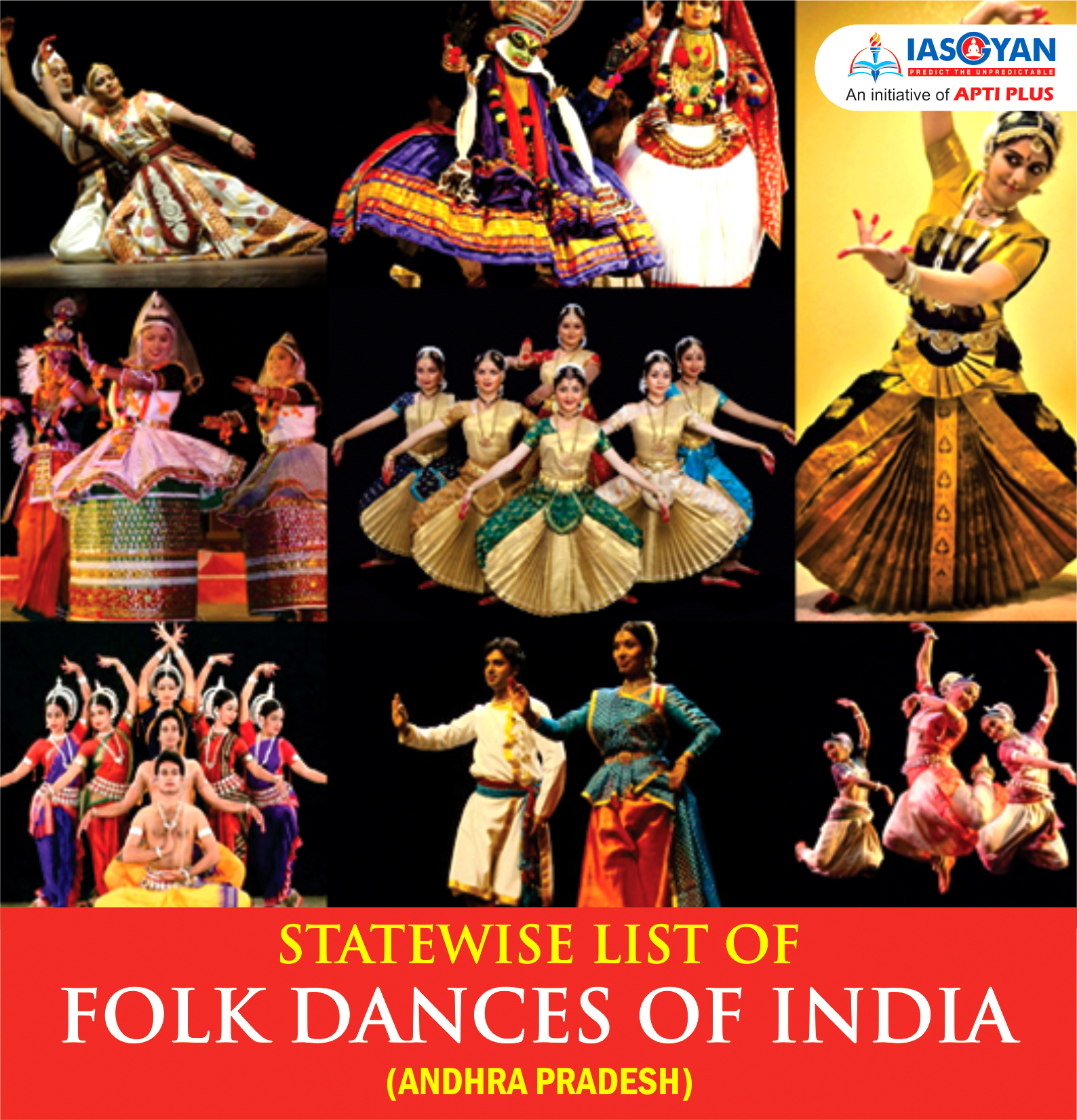
This art form was derived from the famed ‘ Kuchipudi’ dance, by a revered figure named Siddhendra Yogi in the 17th century. This dance entirely revolves around Satyabhama. She was the beautiful yet jealous wife of Lord Krishna. Bhama was the woman's original name, and Kalpam means complaint or jealousy. The Bhamakalpam dance in Andhra Pradesh exhibits feminine movements in the dance. It is known as Lasya. In Bhamakalpam, the dancers use stylistic hand gestures, body movements including subtle facial expressions and with more realistic acting. The performance in Bhamakalpam begins with some rituals on the stage. It is followed by each character coming to the stage and introducing himself/herself by performing a ‘daru,’ which is small song and dance sequence related to the character. The artists wear ornaments made from a lightweight wood locally called ‘Boorugu.’
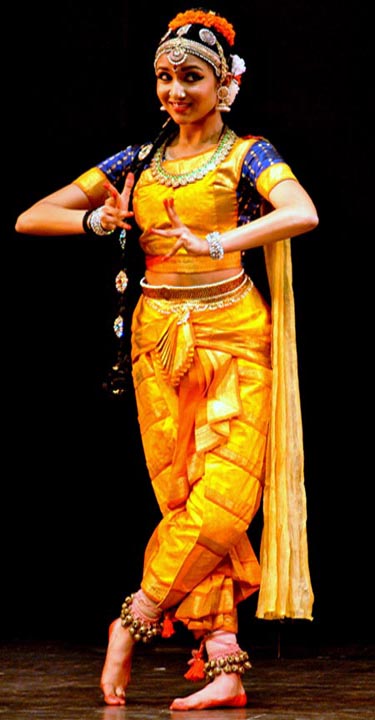
For Better Retention, Watch: https://youtu.be/vJ-V3QSLGWo
Veeranatyam started as a ritual that was performed in Shaivite temples in honour of Shiva. The followers of Veerabhadra are best known for performing this style of dance,
in particular the Veeramusti community in the state of Andhra Pradesh. Natyam or Veerabhadra Natyam is performed by men. The first stage is the holding of "Veerabhadra Pallem" a huge plate carried from the palms to the elbows bearing a camphor fire. The dance goes on vigorously to the tempo of several percussion instruments until the fire is extinguished. Part of this ceremony consists of the ‘Khadgalu’ recital, where a pujari brandishes a long sword representing that of Veerabhadra.
The second stage lies in holding a long consecrated pole, marked with Vibhuti (sacred ash) representing the ‘Dhwaja Sthamba’ of the Lord with bells tied to the top.
In the third stage the performers dance with spears and tridents pierced into their ankles, hands and tongue. This is called ‘Narasam’. The dancers are dressed in colorful knee-length dhotis secured by waist-sashes smeared with vibhuti all over their body. The main percussion instrument is the ‘Veeranam’ or ‘war-drum’.
For Better Retention, Watch: https://youtu.be/iL__AL8aGxs
This dance form earned its name from the sound produced by a simple percussion instrument, a tambourine-like drum which is called 'Dappu'.
The instrument consists of a circular wooden frame made mostly of neem wood. The wooden frame is fitted the skin of a buffalo or goat. Dappu plays an important role in Telugu rural art, called Janapada Kalalu. The dancers wear a 'Talapaga' or a head turban, along with a dhoti, datti and ankle bells.
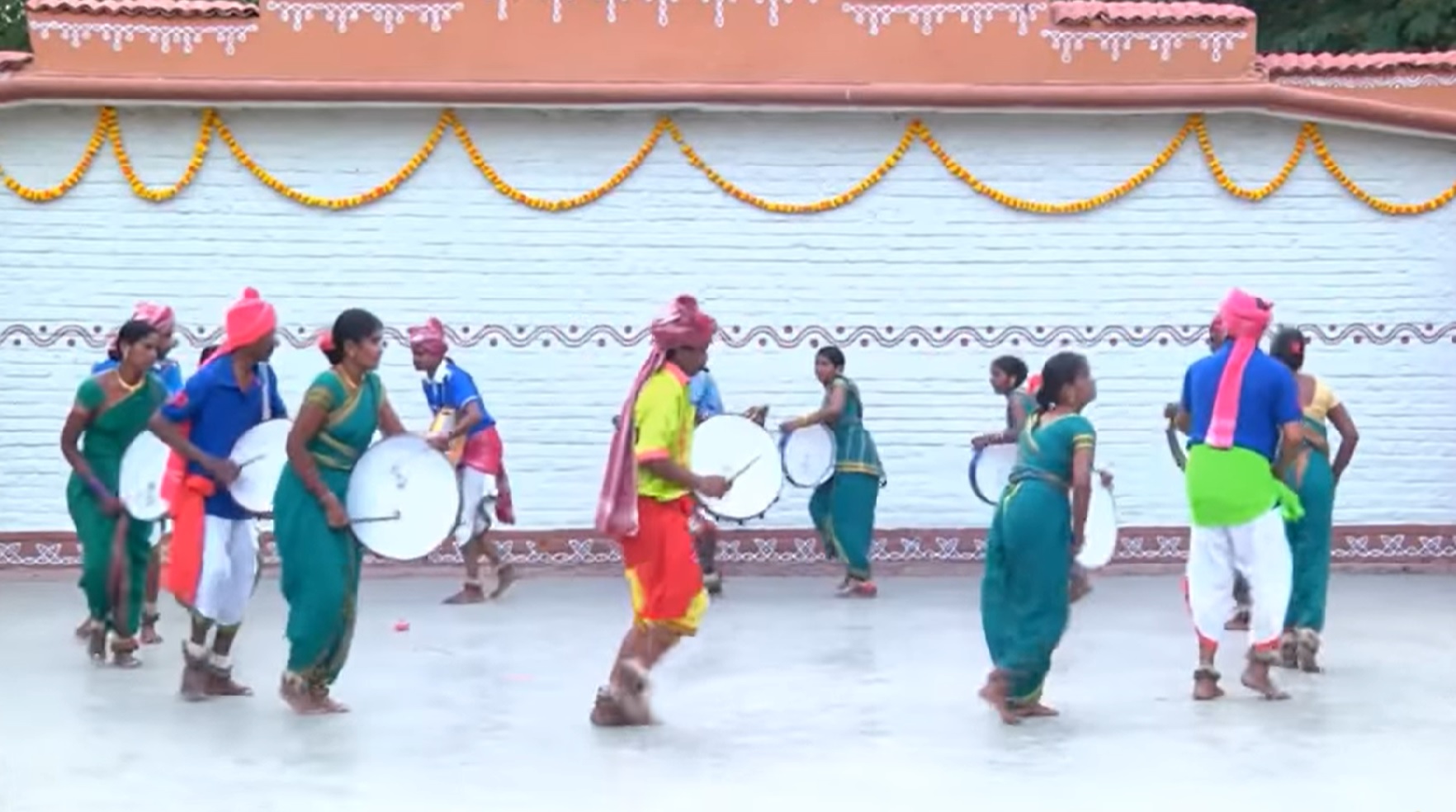
The drum is rhythmically beaten with sticks, which is softened by the sound produced from the ankle bells worn by the dancers. The dancers practicing Dappu dance form are seen in the front row of any religious procession, festivals, jataras, or even marriages and other ceremonies. The performers of this art apply attractive make-up and adorn colorful costumes. They dance to the musical patterns while mythological themes are enacted to entertain the audience.
Dappu dance is mainly done when this drum is beaten up using sticks. The sticks that are used to beat this instrument are different in thickness.
One is thinner than another one so that it makes a different sound when it hits the drum. The thicker stick is called sirre that is held in the right hand and the thinner stick is called sitikena or chitikena held in the left hand.
For different occasions, the drum-beating style is different which is called “debba”.
The beating of the Dappu is not freestyle. It follows rhythm and styles. Where sometimes it is done in celebration other times it is done based on mythological themes to teach people and entertain them.
Dappu is danced is a group of fifteen to twenty people. Only males participate in this dance. Females can be included only in the celebratory dance. For different occasions, dance styles differ a little. For example, when the dance is being performed at stage dancers move in a circular motion and when it is being performed on roads it is performed while moving forward.
Dancers wear a turban that is called tala paga, a dhoti (bottom), and bells on their ankle. These are the bells that make dance more pleasing by rhyming with the drum beats. Costumes of dancers are very colorful and they use colorful makeup too.
Instruments used in Dappu Dance
Tabla
Cymbals
Harmonium
Dapppu
Leatherworkers are the ones who started dancing and playing this drum for their amusement as upper caste people did not allow them to be included in their events. Dappu is not only a drum on which people dance it signifies so many things. It became a movement for the Madiga community.
For Better Retention, Watch: https://youtu.be/rBE2xRK62SU
Tappeta Gullu is a kind of Folk Dance that derives it origin from the folk cultures in India. Tappeta Gullu is often regarded as a ritualistic performance. This is due to its religious inclination. It was previously performed by the shepherds to appease the Rain God known as Gangamma. Afterwards it emerged as a special form of dance drama, with a touch of religiosity. It had been popular amongst the Yadavas but later found its way into the ordinary circle.
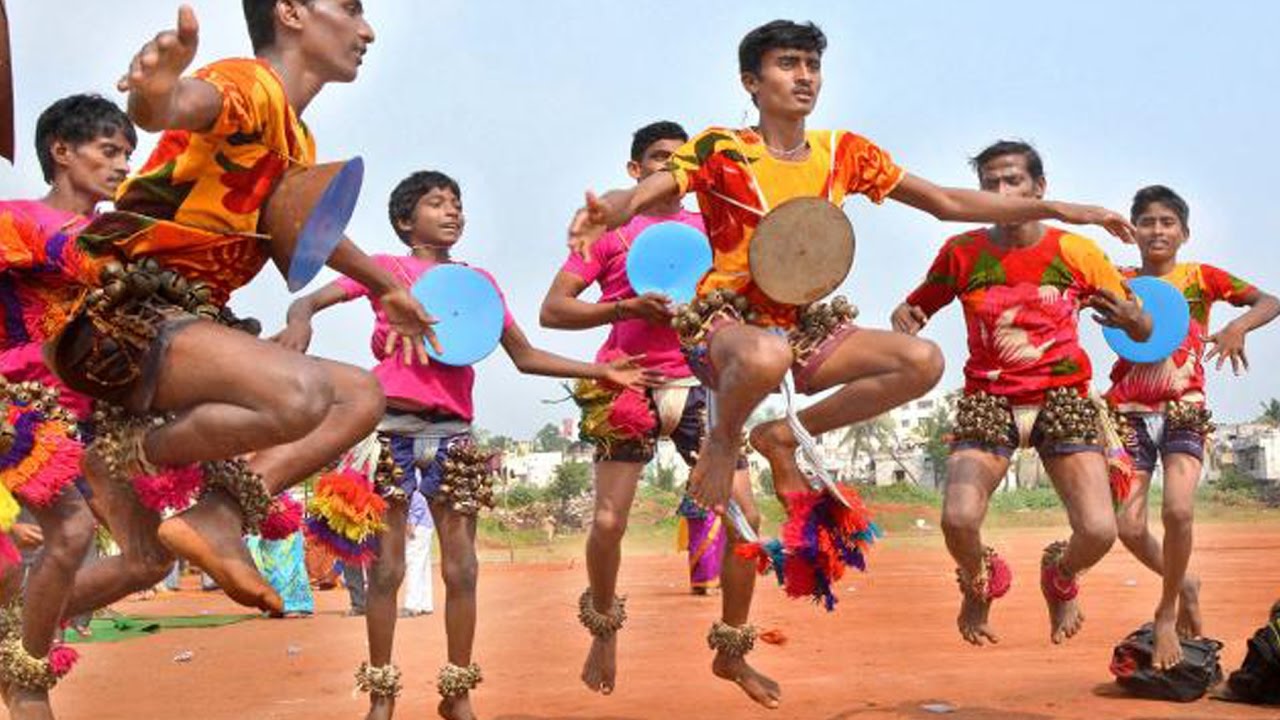
For Better Retention, Watch: https://youtu.be/1gJ7dJObvQU
Kuchipudi is one of the classical styles of Indian dance. Around the third and fourth decade of this century it emerged out of a long rich tradition of dance-drama of the same name.
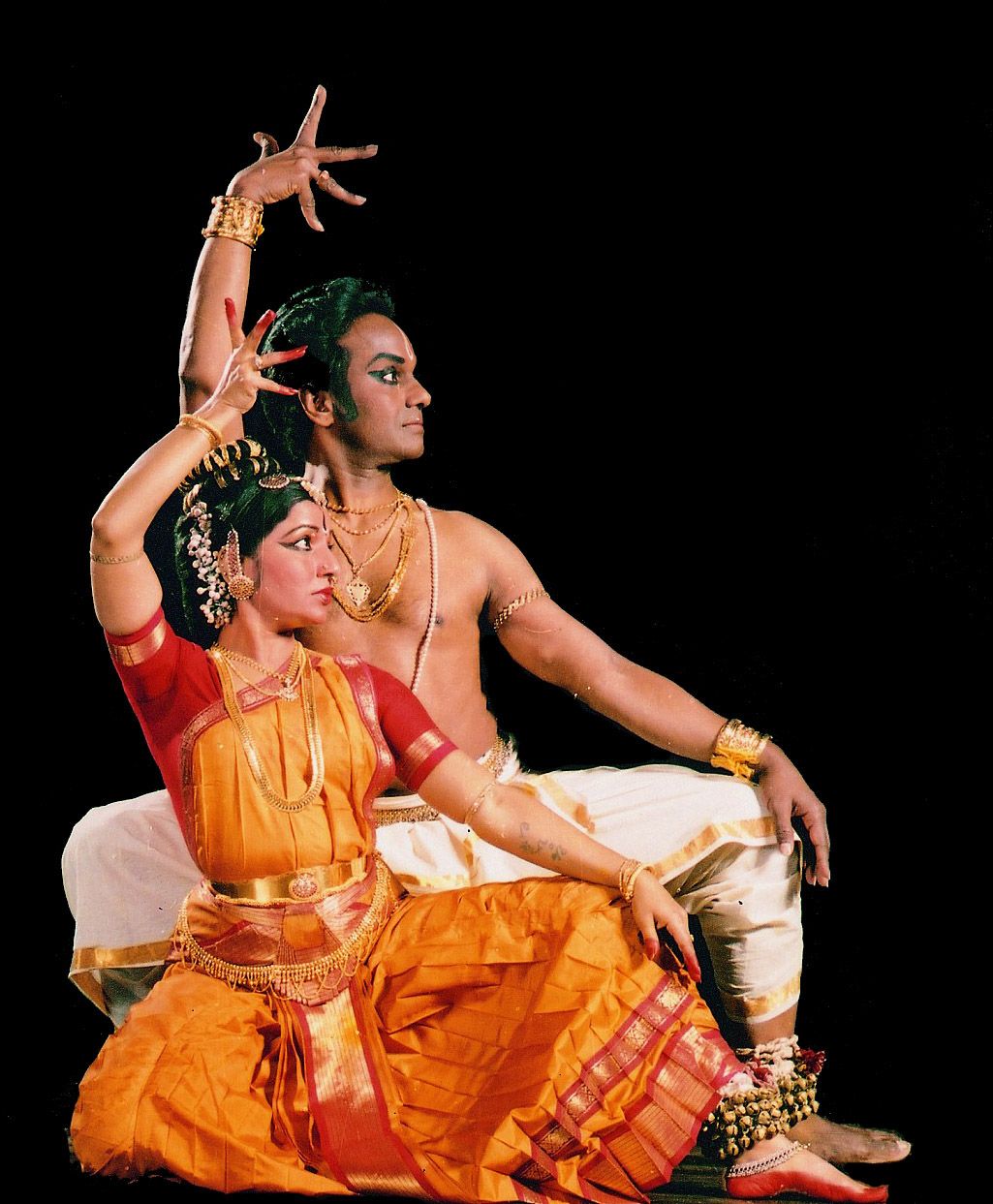
Kuchipudi is the name of a village in the Krishna district of Andhra Pradesh. It is about 35 km. from Vijayawada. Andhra has a very long tradition of dance-drama which was known under the generic name of Yakshagaana. In 17th century Kuchipudi style of Yakshagaana was conceived by Siddhendra Yogi a talented Vaishnava poet and visionary who had the capacity to give concrete shape to some of his visions. He was steeped in the literary Yakshagaana tradition being guided by his guru Teerthanaaraayana Yogi who composed the Krishna-Leelatarangini. a kaavya in Sanskrit.
| It is said that Siddhendra Yogi had a dream in which Lord Krishna asked him to compose a dancedrama based on the myth of the bringing of paarijaata flower for Sathyabhaama, the most beloved queen of Krishna. In compliance with this command Siddhendra Yogi composed the Bhaamaakalaapam which is till now considered the piece-deresistance of the Kuchipudi repertoire. |
Siddhendra Yogi initiated young Brahmin boys of Kuchipudi village to practice and perform his compositions particularly Bhaamaakalaapam. The presentation of Bhaamaakalaapam was a stupendous success. Its aesthetic appeal was so great that the then Nawab of Golconda, Abdul Hasan Tanishah issued a copper plate in 1675 A.D. granting the village Kuchipudi as an Agrahaarama to the families of Brahmins who pursued this art. At that time all the actors were male and the female impersonation was of a superb quality.
The followers of Siddhendra Yogi wrote several plays and the tradition of Kuchipudi dance-drama continues till today. It was Lakshminarayan Shastry (1886-1956) who introduced many new elements including solo dancing and training of female dancers in this dance style.
Solo dancing was there earlier, but only as a part of the dance drama at appropriate sequences. 'At times, even though the dramatic situation did not demand, solo dancing was being presented to punctuate the presentation and to enhance the appeal. One such number is tarangam inspired by the Krishna-leela tarangini of Teerthanarayana Yogi.
To show the dexterity of the dancers in footwork and their control and balance over their bodies, techniques like dancing on the rim of a brass plate and with a pitcher full of water on the head was introduced. Acrobatic dancing became part of the repertoire. By the middle of this century, Kuchipudi fully crystallized as a separate classical solo dance style. Thus there are now two forms of Kuchipudi; the traditional musical dance-drama and the solo dance.
From the later part of the fourth decade of this century a sequence of the presentation of the solo recital has been widely accepted.
For Better Retention, Watch: https://youtu.be/KzEN21owtBw
Vilasini Natyam is an Indian classical dance from the state of Andhra Pradesh. It is an old form that goes back in time when temple dancers used to perform to invoke gods and goddesses. These dancers were called Devadasis.
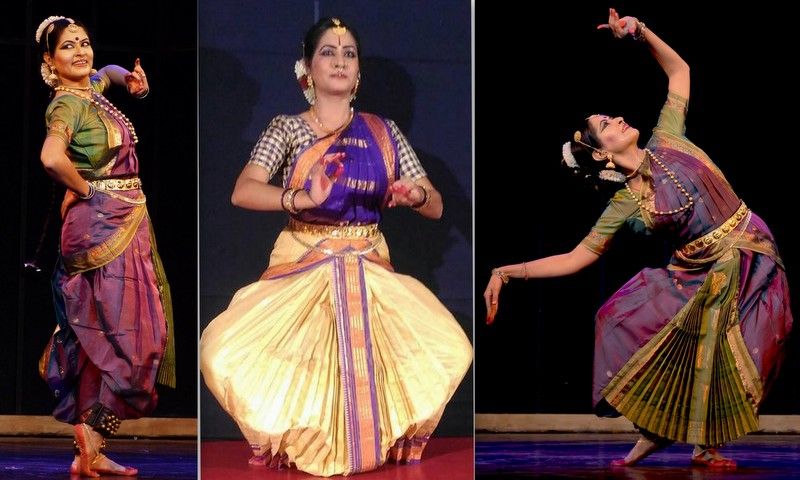
There are two forms of this dance one that is performed by men and another that is performed by females. The dance used to be done in courts, public theatres, and temples. This dance was known as Bhogam Aata and Saani Aata. Devadasis were assumed to be married to God of the temple. Form performed by men is called Purusha Sampradaayam and the form performed by women is called Stree Sampradaayam. Women performers are often called Swamini, Vilasini, and Bhogini. Other names used for Vilasini dancers are Saanis, Vidya Vilasini, Bhogams, and Kalavatis.
Vilasini Natyam is the dance form of Devadasis of Telugu hence it is also called Devadasi dance.
Though Vilasini Natyam movements appear quintessentially feminine, its 100-odd Adavus (dance-units) include Tandava (vigorous) and Lasya (soft) aspects. Vilasini Natyam's complex Abhinaya is widely admired. Its extensive repertoire comprises temple dances, court dances and dance operas of the hereditary female singer-dancers of Telugu origin.
For Better Retention, Watch: https://youtu.be/ETzvz2v6x7U
Lambadi dance is a folk dance of the Banjara community of Andhra Pradesh. It originated at the Anupu Village.
Lambadi dance is done to impress gods for a good harvest. Mainly women perform the Lambadi folk dance. It is not prohibited for men to participate in this dance. But due to its restricted nature and smooth hand gestures, it is more suited for female performers. Sometimes men do support females and dance with them on stage. Their work is mainly to play instruments when women are dancing.
While performing lambadi dance, women wear blouses or shirts with a long skirt. They take an Odhani (dupatta/chunni) for the head. Every piece for their clothing is heavily ornamented with glasswork. The colors they wear are vibrant that matches with their heavy jewelry. This costume matches with the costume of the Rajasthani people. The chudas (hand ornament) they wear are also similar to the ones worn by Rajasthani women.
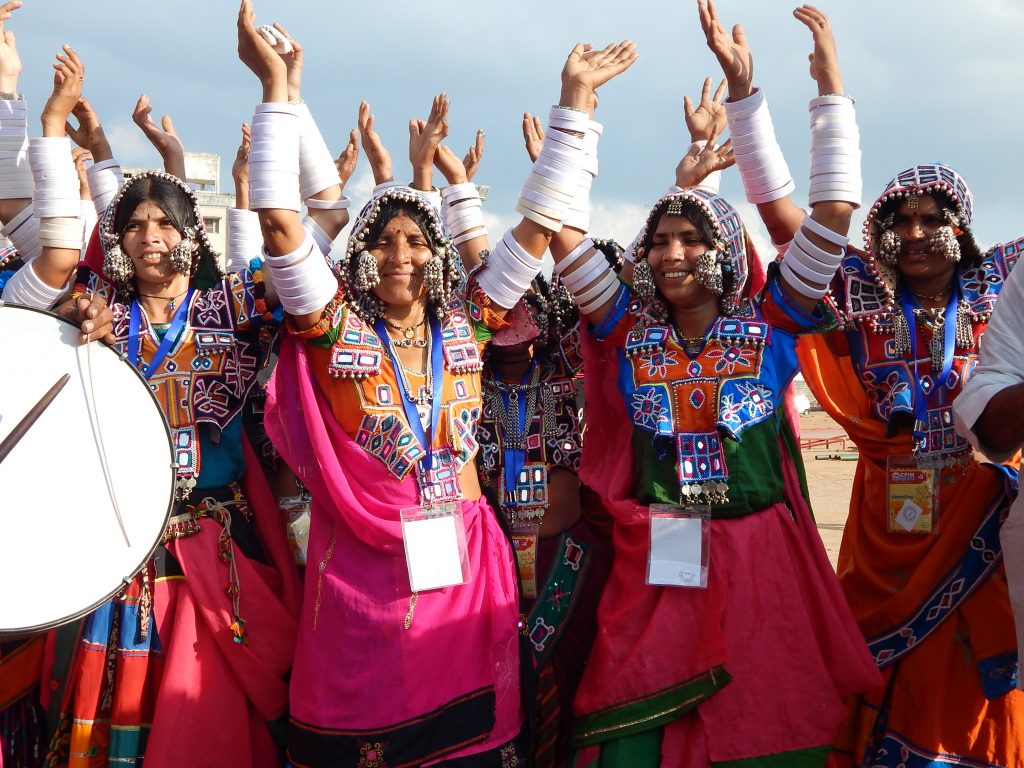
Since Lambadi is a dance of the females, it is neither vigorous nor erotic.
The subtle feminine movements of the Lambadi Dancers are delightful and rhythmic. When the drum is being played the dance gains a momentum and sensuousness. In order to support the female dancers and to compliment them with rhythmic touches, the male drummers often start dancing with their female counterparts. The Lambadi Dance is inspired from the daily chores of the farmer and it mainly involves on issues such as harvesting, sowing and planting.
For Better Retention, Watch: https://youtu.be/32eEEb178nc
Dhimsa is a tribal dance form that is performed primarily by Porja caste women in Andhra Pradesh.
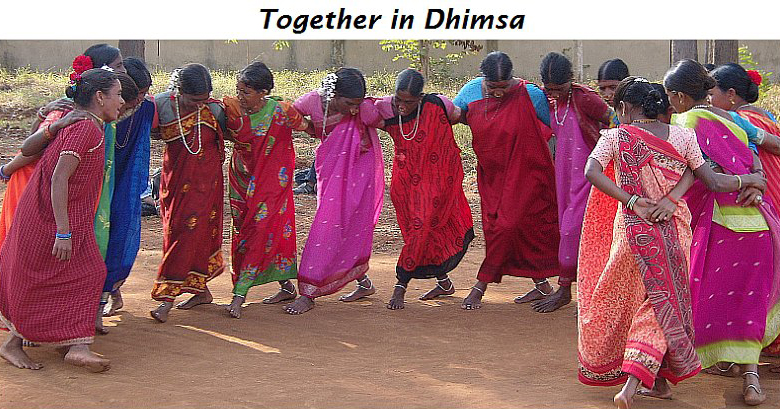
A group of 15–20 women form a circle and dance praising the deity for the welfare of their domestic life. They also dance at the weddings since the women pray for peaceful and happy married life. They typically wear tribal dresses and ornaments while the leading lady also carries a peacock feather in her hand.
This expressive dance is dominated by the movements of feet and hands of the group performing the dance in a circle. Though this dance can be performed by men and women, young and old, typically around 15-20 women form a chain and move their feet according to the rhythm and make formations of smaller to larger circles. There are several variations in this dance.
The members play Dappu (drum with a short stick), Tudumu, Mori, Kiridi and Jodukommulu. The performers dance to the drum beats and usually the music is played by men.
The attire is colorful with earthy tones of green, red and yellow. The dancers wear sarees that fall just below the knee. Their necks are adorned with tribal ornaments.
For Better Retention, Watch: https://youtu.be/6QZcxfcWJ8E
Kolannalu or kolkolannalu (also named kolattam), 'stick dance', is one of the most popular dance narratives in the Andhra Pradesh.
It is a rural art usually performed during village festivals. It is a combination of rhythmic movements, songs and music. The Kolattam group comprises dancers ranging from 8 to 40 who are grouped in pairs. The sticks provide the main rhythm.
The dancers are led by a leader and move about in two circles. The inner circle receives the strikes on their sticks from the artists in the outer circle that deliver them. The dancers basically strike the sticks as they move in circular motion with the rhythm of music. The striking of sticks produces the main rhythm for the dance movement and this unique feature sets Kolattam folk dance apart from other dances.
Different types of Kolattam dances can be seen such as Pinnal Kolattam where women hold ropes to perform the dance and the other end of the rope is tied to a poll. As the dancers move in rhythmic steps, they form beautiful, intrinsic patterns in the ropes. The colorful ropes form attractive lace-like patterns which is a typical characteristic of Pinnal Kolattam dance.
For Better Retention, Watch: https://youtu.be/gUmk-Qexmck
Butta Bommalu is a folk dance of Andhra Pradesh. This dance is performed to celebrate happiness during festivals.
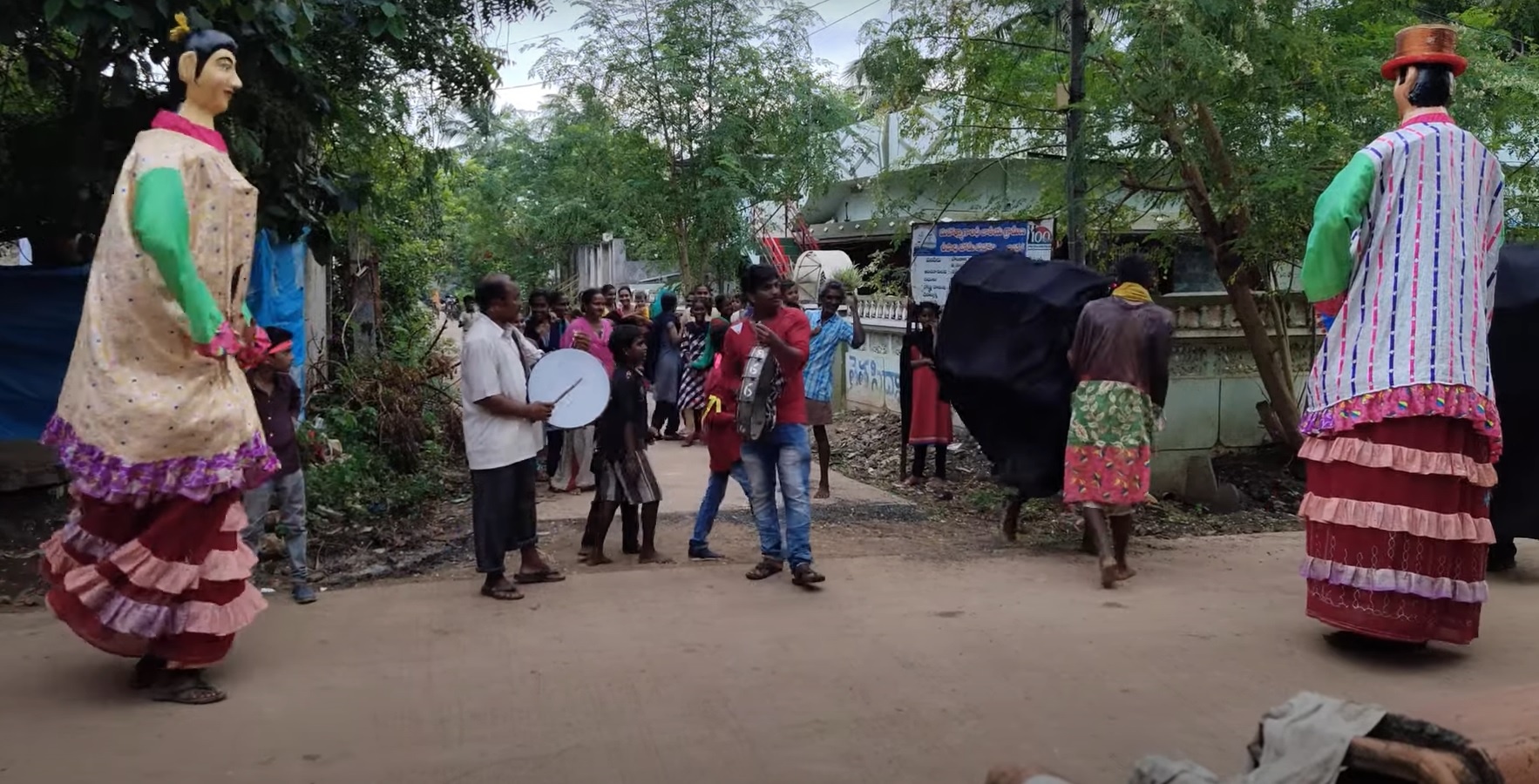
Dancers dance very softly and gracefully. Although this dance performance can be done by a single artist, it is usually performed in a group of four to eight people.
Butta Bommalu performers wear a costume made of bamboo sticks, cow dung, paint, and dry grass. It is a doll-like a costume hollow from the inside. Since it is hollow and made from bamboo sticks it is very light-weighted which makes it easier for the dancer to carry it around while dancing.
The dolls are made open at the bottom for the dancer to be able to slip in them. They look like dancing puppets. These costumes are painted with colorful paints. Every dancer wears a costume on their head, shoulder, and waist. Costumes of Krishna, Rama, Shiva, Parvati, Hanuman, etc are very popular.
This dance can be seen during many festivities in Andhra Pradesh. Which doll is being used depends on the festival too. If it’s Navratri, dolls of goddesses will be used, if it’s Dussehra dolls of Rama and hanuman will be used. The costume of Hanuman is popular among kids. Hanuman dancers do the tricks of a monkey to present their role strongly.
There is no specific music used in this dance. Performers start their dance on the beat of the Dappu music instrument. It is a drum-like instrument that gives a beat to the dancer.
For Better Retention, Watch: https://youtu.be/eaUlOk_mki0
© 2025 iasgyan. All right reserved